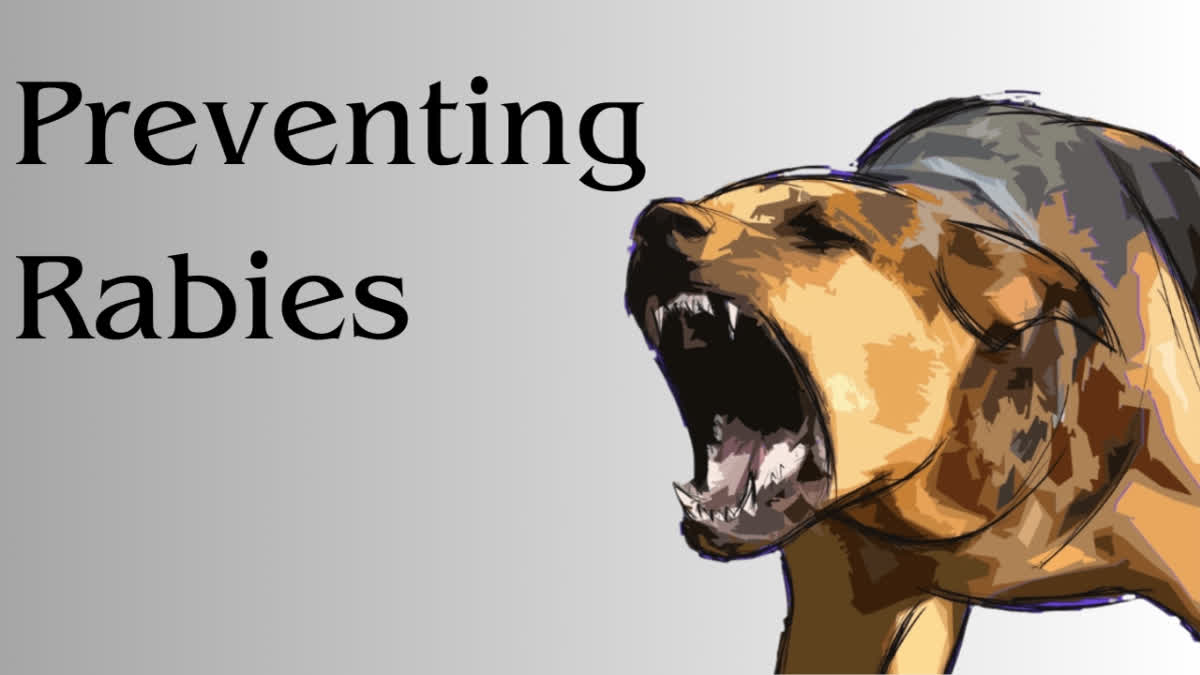Hyderabad: Rabies, a deadly viral disease with a centuries-old history of afflicting humanity, can be effectively thwarted through enhanced awareness, education, and strategic interventions.
Promoting Awareness and Education: The cornerstone of rabies prevention lies in fostering awareness and education within communities. Empowering individuals with knowledge about rabies prevention in animals, recognizing its telltale signs, and understanding immediate actions to take after an animal bite are pivotal. This fundamental awareness is paramount in halting the spread of this lethal disease.
Post-Exposure Prophylaxis (PEP): PEP involves a series of rabies vaccines and, in some cases, rabies immunoglobulin (RIG), administered following a suspected rabies exposure. Coupled with proper wound management and prompt access to quality-assured PEP, this intervention boasts nearly 100% effectiveness in averting rabies-related fatalities.
Mass Dog Vaccination: With dogs accounting for a staggering 99% of human rabies cases, eradicating rabies in these animals is pivotal to sustainable human disease prevention. Mass dog vaccination stands as a proven, cost-effective strategy, not only saving human lives but also intercepting the rabies transmission at its source.
One Health Collaboration: Achieving awareness and vaccinating dogs necessitates seamless collaboration between the human and veterinary health sectors. National and regional elimination plans assume a pivotal role in bolstering preparedness, surveillance, and resource mobilization. This coordinated approach not only benefits communities but also fortifies the surveillance of rabies and other diseases within the human health system.
Understanding Canine Behaviour: Dogs, cherished as loyal companions, may resort to biting humans in specific situations, often rooted in miscommunication stemming from language barriers between humans and dogs. Therefore, acquiring the knowledge to behave responsibly around dogs is imperative to evade scenarios that culminate in dog bites. Typically, dogs resort to biting out of fear, pain, frustration, or in defence of their territory, primarily due to inadequate socialization with people and other animals.
Transmission of Animal Rabies: The transmission of animal rabies mirrors that of human rabies, with virus-infused saliva from infected animals entering the body through wounds or direct contact with mucosal surfaces. After accessing muscle cells at the wound site, the virus follows peripheral nerves and subsequently infiltrates the central nervous system, traveling retrograde from the CNS via peripheral nerves to various tissues, notably the salivary glands, from where it is shed, completing the transmission cycle.
Investment in Cost-Effective Rabies Prevention: Investing in preventing rabies at its source proves both humane and highly cost-effective. Vaccinating a minimum of 70% of dogs in areas at risk is now recognized as the most efficacious means of averting human rabies deaths. However, in many regions of Asia and Africa, dog vaccination coverage remains inadequate, potentially paving the way for the resurgence of this dreadful disease.



